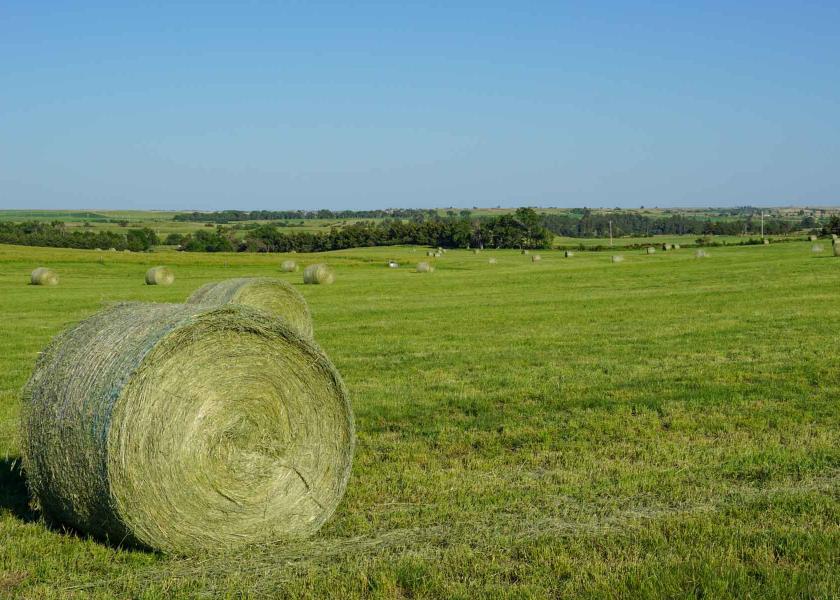Ask for a Feed Analysis Report on Hay Before Buying or Feeding

Winter is coming. Drought, deteriorating pasture conditions and short hay inventories in Oklahoma and the surrounding states of Texas, Missouri and Kansas, has most cow-calf operations scrambling to secure hay supplies for the coming winter. Given the current situation it can come as a relief to just find hay to purchase.
That being said, it is still important to ask for a FEED ANALYSIS REPORT of the hay before you agree to buy. Among the consequences of wide scale lack of moisture is fields planted to produce a cereal grain crop become drought stressed and are reduced to a hay crop. The hay resulting from these intended cereal grains is potentially of excellent quality and feed value but sorghum (corn or milo) hay needs to be evaluated for nitrate levels.
OSU Cooperative Extension Service Fact Sheet PSS-2903 offers a closer look at Nitrate Toxicity in Livestock. This fact sheet explains the levels of nitrates that are considered safe or dangerous, as well as feeding strategies for forage and hay supplies of varying nitrate levels.
Additional information gained through testing hay for nutritional content includes:
- Dry Matter and Moisture Content
- Crude Protein (CP%)
- Total Digestible Nutrients (TDN%) measuring the Energy level. Other estimates of energy obtained include Net Energy for maintenance, lactation and growth.
- Relative Feed Value (RFV)
This information can be used to compare “apples -to-apples” when buying hay. Forage quality varies not only among different plant species, but also within forage species. As well, forage quality of a specific variety can vary based on conditions such as soil fertility, drought stress and stage of maturity at harvest. For example: Bermudagrass hay can vary widely in nutritional content. If you had the opportunity to purchase Bermudagrass hay at $200/ton that tested 18% CP and 60% TDN or Bermudagrass hay at the same price that tested 7% CP and 55% TDN, which is the better buy? Both may appear the same to the naked eye but a nutrient analysis permits you to make the better buy. Furthermore it permits you to plan a feeding program knowing how much cows should consume and how much is needed to meet cows nutritional requirements.
The same advantages hold true for hay you already have on inventory. The best single measure of forage quality is animal productivity. To ensure animal productivity, assess your forage supply and modify the animal diet before consumption. OSU Cooperative Extension Service Fact Sheet PSS-2117 offers deeper insight to Forage Quality Interpretations.







